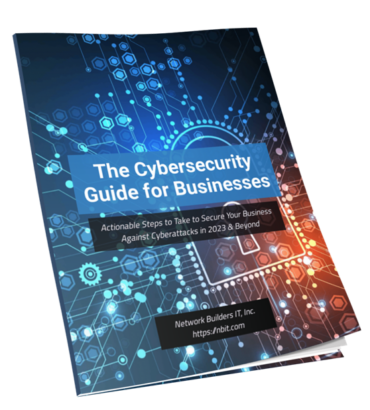
Technology Risk Management: How to Prepare Your Business
In today’s interconnected world, technology has become an integral part of every modern business. From cloud computing to mobile devices, enterprises across all industries rely heavily on tech infrastructure to function efficiently and effectively. However, as with any type of complex system, the use of technology also introduces a host of risks that could potentially harm your business operations or lead to financial losses.
It is crucial for companies to implement appropriate measures and strategies for managing their technology-related risks so they can safeguard their data assets and maintain business continuity in the face of disruptions. In this article, we will explore some effective ways on how you can prepare your company from potential technology threats by creating a sound Technology Risk Management framework that aligns with your overall risk management strategy.
Understanding Technology Risks in Business
Technology has transformed the way businesses operate. However, it also exposes them to new types of risks that may not have been present in the past. One of the most significant technology-related risks is cybercrime. With hackers becoming more sophisticated, their ability to infiltrate company networks and steal sensitive data has increased. This can lead to reputational damage or legal consequences for businesses and their clients alike.
Another risk is technological obsolescence. Given the rapid pace at which advancements in tech are happening, a system that worked well yesterday may no longer be efficient tomorrow. Businesses need to ensure they continuously update their systems, so they don’t fall behind competitors or suffer from reduced productivity due to outdated technologies.
Lastly, human error poses a threat as employees who are not tech-savvy might inadvertently open emails with malicious links or fail to follow security protocol resulting in costly data breaches for companies. The bottom line: businesses must recognize these technological risks and take steps towards managing them proactively through measures such as training & education programs for employees on cybersecurity best practices, adopting layered IT-security strategies coupled with regular software updates and staying aware of trends occurring within your industry’s network infrastructure.
Identifying and Assessing Technology Risks
One of the crucial steps towards risk management includes conducting a thorough analysis of all areas where technology could pose threats, such as data breaches, system failures, cyber-attacks or even natural disasters. This requires a deep understanding of technological systems and the ability to evaluate their vulnerabilities appropriately.
Another vital element is developing an effective strategy for addressing said risks. They Hn be mitigated in various ways depending on an organization’s specific needs, risk tolerance level, budgetary constraints and regulatory requirements. Some common mitigation strategies include enhanced cybersecurity measures like firewalls, antivirus software; redundancies within IT infrastructure such as backups or secondary servers; reducing reliance on third-party vendors who may have inadequate security controls among others.
Identifying and assessing technology risks should be viewed as an ongoing process that constantly evolves with changing technologies and business environments. Organizations must take proactive approaches for safeguarding their technological systems through continuous assessments while also working proactively to identify emerging trends.
Mitigating Technology Risks: Preventing and Preparing for Cyberattacks
With the rise of cyberattacks and data breaches, companies must take proactive steps to mitigate technology risks. One such step is implementing protocols that prevent unauthorized access to sensitive information. This includes using strong passwords, encrypting data, and restricting access points.
Companies should also have contingency plans in place that outline how they will respond to various types of incidents. These plans can include protocols for backing up important data, notifying stakeholders about a breach or outage, and activating emergency response teams if necessary.
As technology continuously evolves, businesses must continually reassess their strategies and adapt accordingly. By staying vigilant and taking proactive steps to mitigate risks before they become a problem, companies can help safeguard themselves against potentially devastating consequences like financial losses or reputational damage caused by cyberattacks or other unexpected disruptions in their tech infrastructure.
Creating a Technology Risk Management Plan: Best Practices and Strategies
Creating a technology risk management plan is an essential practice for any organization that aims to protect its assets and maintain operations. The best way to approach this task is by outlining the risks associated with specific technologies, assessing their impact on the business, and developing strategies to mitigate them adequately. This planning process involves collaboration between various stakeholders within the organization who can provide insights into how technology use supports different functions.
One of the most critical aspects of creating a technology risk management plan is establishing clear policies and procedures that minimize risk exposure. These guidelines should cover everything from data security protocols to employee usage restrictions and equipment maintenance expectations.
Working with Technology Experts: The Value of Professional Support and Guidance
Many businesses turn to technology experts for professional support and guidance in order to effectively manage IT risks. These experts possess the knowledge and experience necessary to accurately identify potential vulnerabilities in a company’s tech infrastructure, as well as develop comprehensive risk management plans that can mitigate these risks.
Working with technology experts also offers the added benefits of staying up-to-date on the best practices within the industry. By partnering with professionals who are plugged into the wider tech community, businesses can gain valuable insights into new tools or software that could help streamline operations or enhance security measures.
Enlisting the expertise of experienced professionals is an important step for any business looking to protect their operations from unexpected technological setbacks. With proper guidance and support in place, companies will be better equipped to handle any challenges that may arise while leveraging modern tech infrastructures effectively.
Wrapping Up
Technology risk management is a critical component of any modern business. The rapid pace of technological advancements means that companies must be prepared to adapt quickly and implement appropriate measures to protect their technology infrastructure from potential risks. This involves identifying potential threats and vulnerabilities, establishing effective risk mitigation strategies, and ensuring ongoing monitoring and review of these measures.
By investing in robust technology risk management practices, businesses can help to ensure the continuity of their operations, maintain customer trust, and safeguard against financial losses. As we continue to rely increasingly on complex tech systems for every aspect of our daily lives, the importance of effective risk management practices will only continue to grow. It is essential for businesses across all industries to prioritize this area as a key part of both their short-term operational planning and long-term strategic goals.

